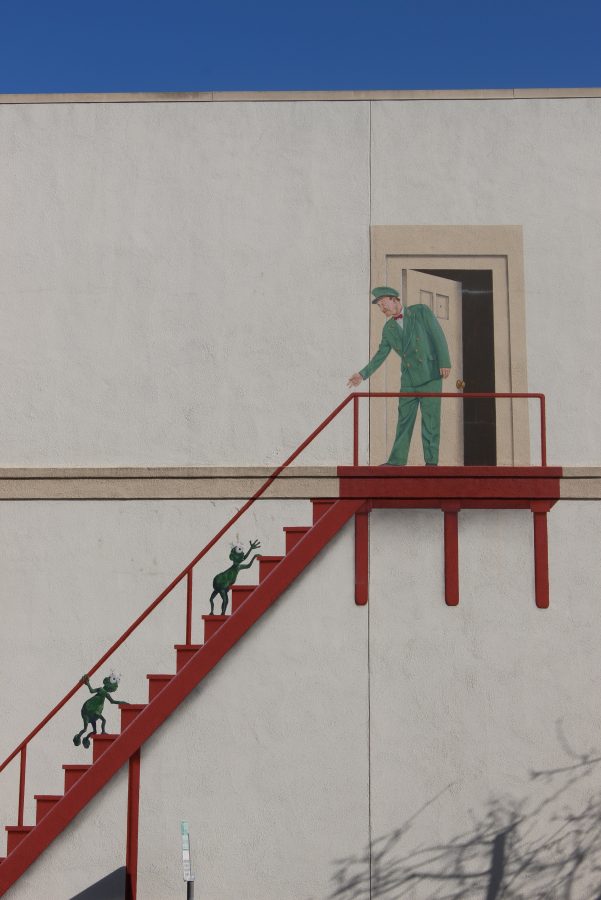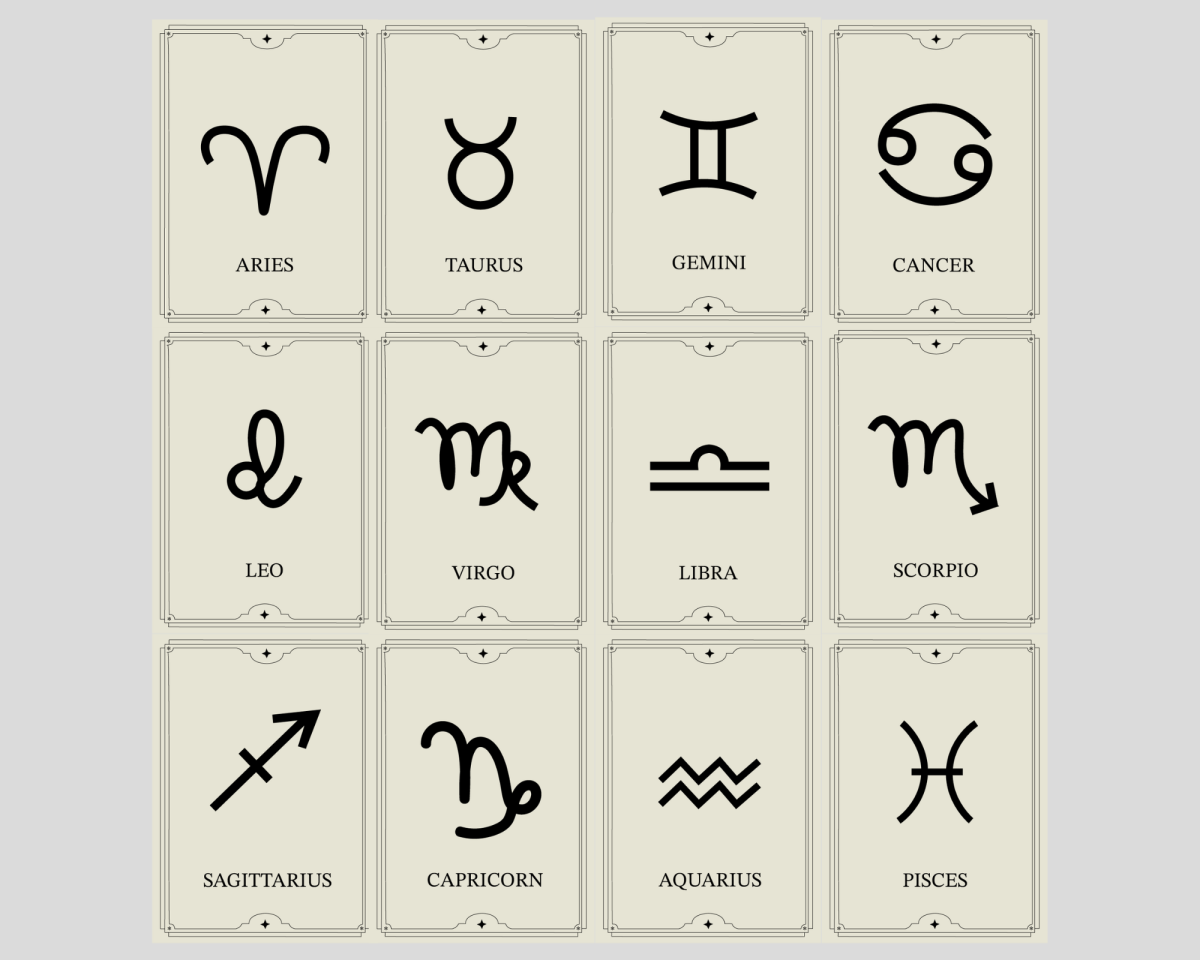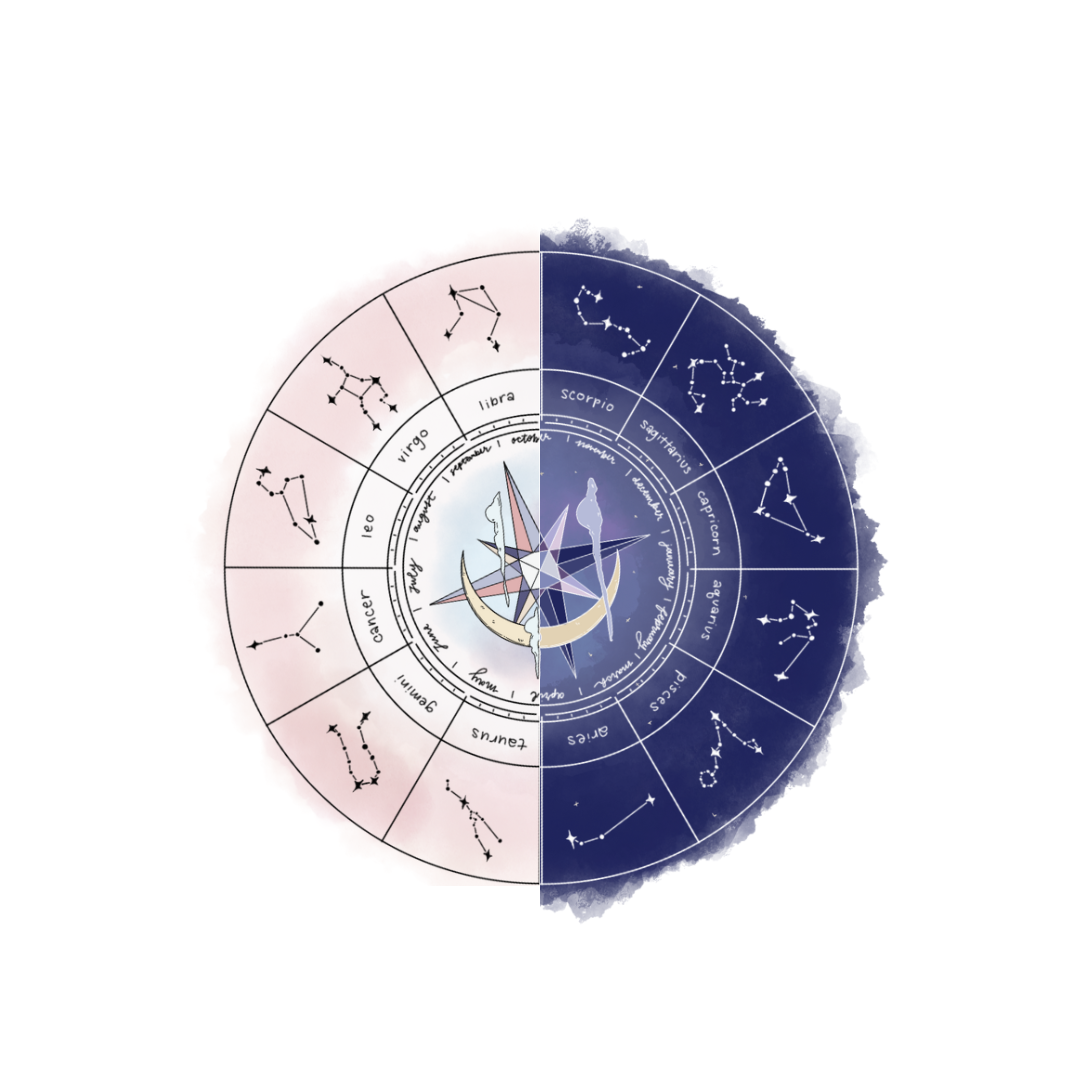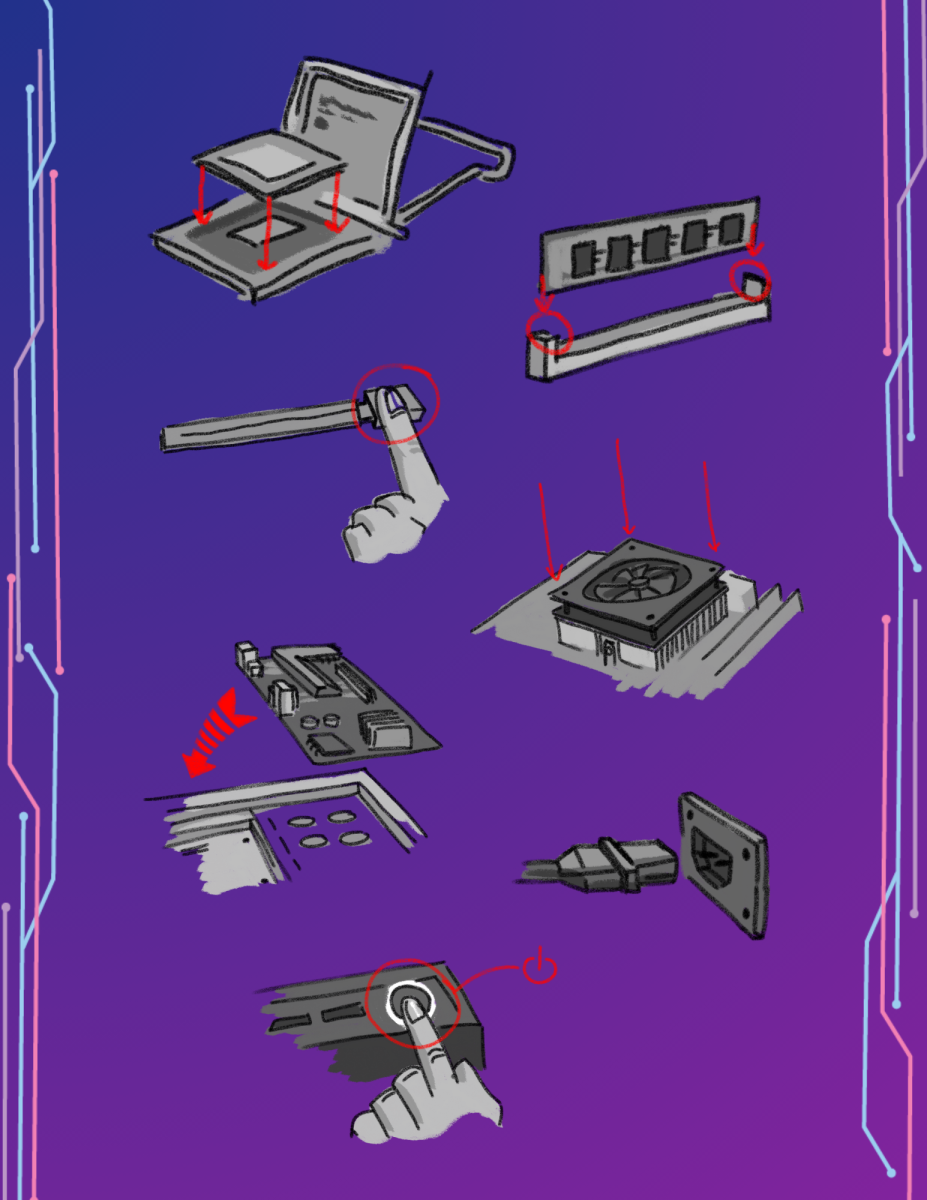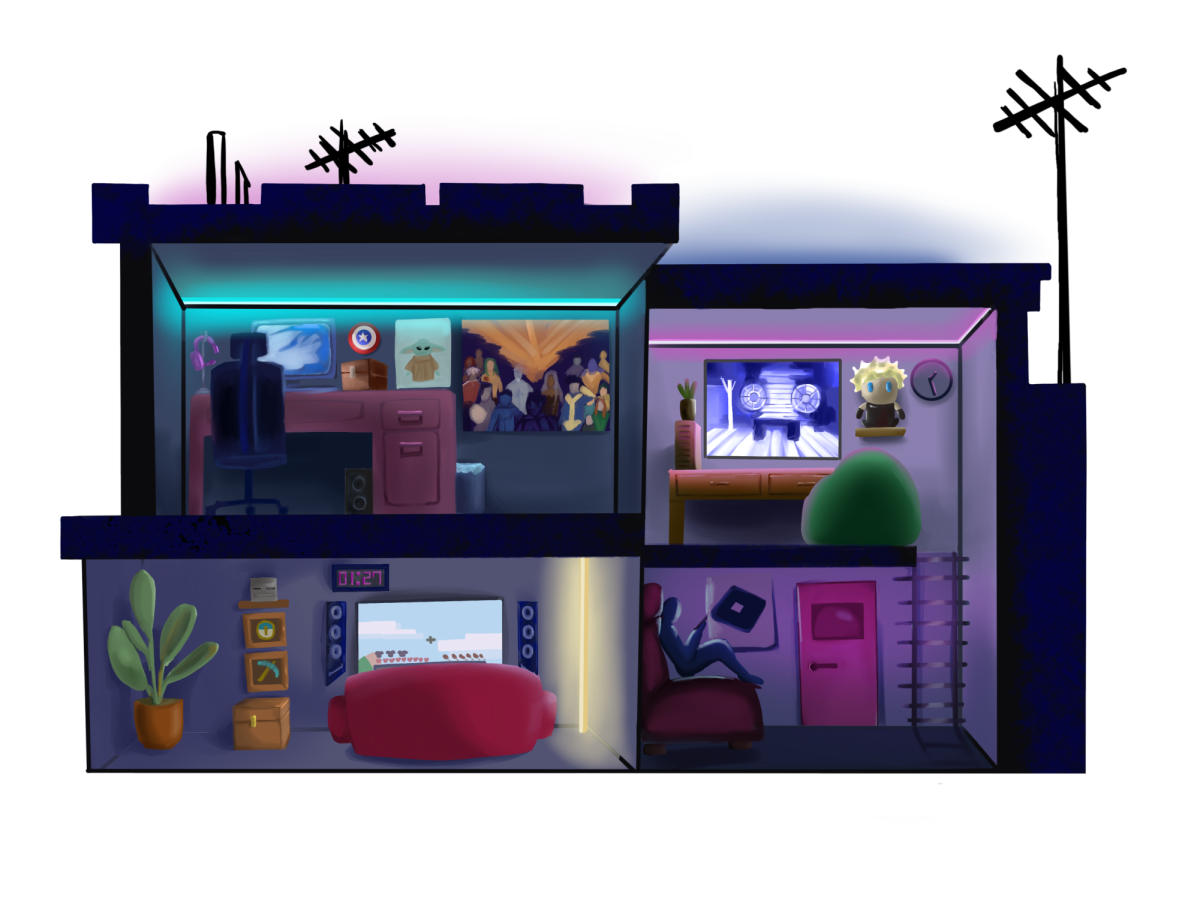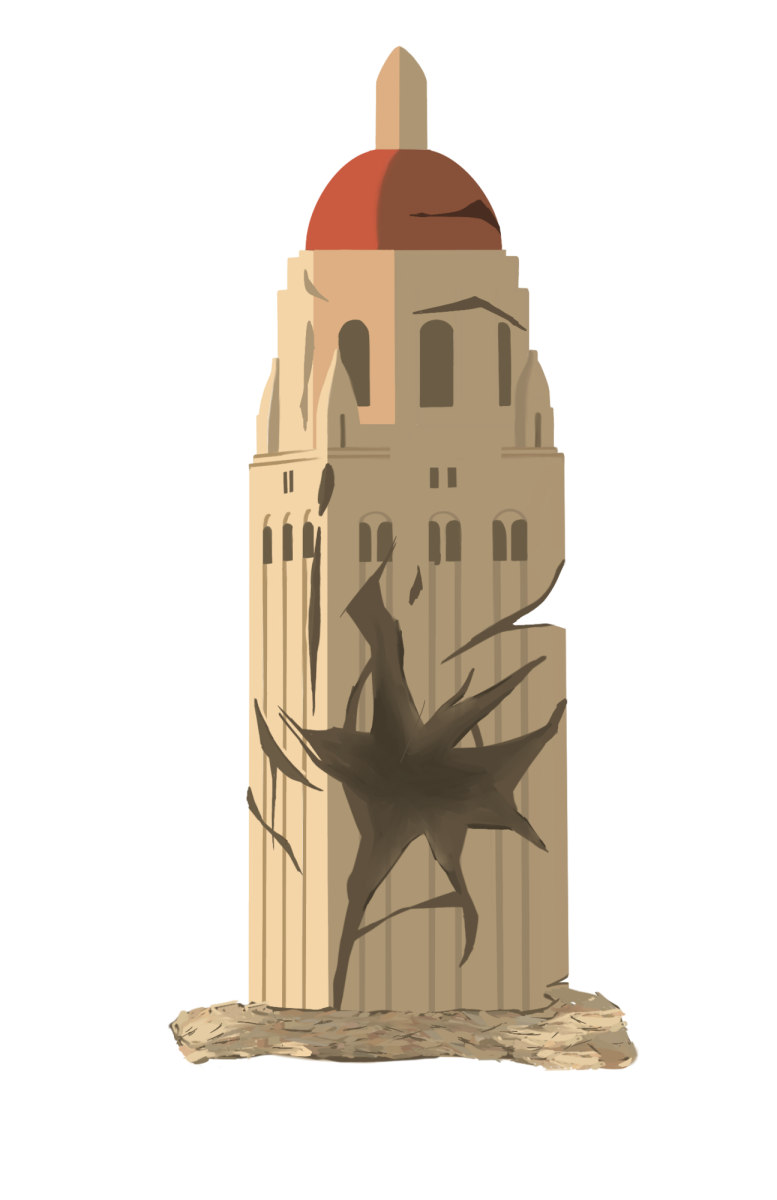By Julia Cheunkarndee
Walking through downtown Palo Alto, passersby have probably noticed various eye-catching murals along the walls of buildings. These pieces of art are known as the “Pedestrian Series”; they were painted by English teacher Justin Brown’s father, Greg Brown, in 1976, after he was hired by the city. There are nine murals in total, and each one incorporates the rather mischievous nature that was signature of G. Brown’s work.
Brown was fond of including familiar faces in his paintings, and he would oftentimes paint old friends or business associates. In one of his most popular murals, he featured himself and his wife as stealthy cat burglars stealing from a downtown department store. Sadly, after the building was remodeled, the wall with the mural was torn down.
In later years, G. Brown decided to pay tribute to the earlier mural by painting one of a similar theme on Hamilton and Bryant. “[The mural] was basically the same thing, but just my sister and I,” J. Brown said. “She’s still hanging onto the rope, and I’m falling off the rope, like maybe ten or fifteen feet below her, screaming, with my arms out. I’m falling from the building, so it was kind of a tribute to the original painting.”
It can be an entertaining experience, somewhat like a scavenger hunt, trying to spot one of G. Brown’s murals along the walls, as various paintings are scattered throughout Palo Alto. The hunt is made all the more enjoyable by the creativity of G. Brown’s work. In one mural, a lady in wide-brimmed hat is seen standing behind a row of bushes, staring open-mouthed at a bird that has perched on the end of her watering hose. In another, G. Brown painted his brother-in-law as a man in a haz-mat suit, lugging a trash can toward a row of garbage bins. At the top of the can, a wide-eyed alien can be seen peeking out.
From aliens to men pushing their cats along in strollers, the nature of G. Brown’s work was often quite humorous. It could also be startling, given the style of his paintings that seemingly sprung them off the wall and into reality. “It was his goal to frighten someone walking by, and they’d say, ‘Oh my gosh, I thought that was a real person,’” J. Brown said. “He got a big kick out of that.”
The realistic aspect to G. Brown’s art is part of what makes the murals so fascinating. They engage the viewer and draw them in, either through a startled second glance or lighthearted appreciation of his work. This style is known as trompe l’oeil, or “deceive the eye,” in French. With this technique, the artist uses realistic imagery to depict certain objects in three dimensions, creating an amazing optical illusion that lives up to the technique’s name.
The trompe l’oeil style, however, reflected the louder and more gregarious side to G. Brown’s personality. “He was a classical painter and really liked painting the traditional stuff at home, which would hang in galleries and in museums and such, but I think he loved the public form of getting people to stop and be entertained by something,” J. Brown said. “I think he just thought it was a very original form of entertainment.”
In fact, fun and entertainment were centerpoints for much of G. Brown’s art. One of his most successful series was known as “Vegetables on Vacation,” a collection of quirky paintings and posters of walking, talking, and dancing vegetables. In one such poster, the dynamic trio of a zucchini, a tomato, and a potato can be seen arm-in-arm, dancing the can-can together atop a box of spaghetti. An onion is beside them, balanced on a can of tuna, while a bell pepper is on its knees and seemingly overcome with admiration.
“He was trying to be clever, for sure,” J. Brown said. “He wasn’t too into this angsty, express-my-inner-demons-and-angst-to-the-world art. He just wanted people to laugh and have fun.”
While growing up, and even while teaching at Gunn, J. Brown says that he never really discussed his father or the murals that he had painted. Much of this avoidance stemmed from self-consciousness around bragging about his dad, as well as G. Brown’s popularity within the community. “If he ever walked into a room or a restaurant, everyone knew him,” J. Brown said. “I didn’t have a problem with that, I was really proud of my dad. My dad was my greatest role model in life, and I aspired to be like him.”
There is a popular sentiment that G. Brown’s paintings have added more personality to Palo Alto, and for many residents the paintings have become a familiar fixture in their everyday lives. In an increasingly corporatized and modernized Palo Alto, they provide a nostalgic, lighthearted touch, even after more than thirty years since their creation.
However, as the town has grown and old buildings are torn down, to be replaced by the new, many of G. Brown’s murals have been lost over time. “I think the murals bring a sense of community and add a color and signature to the town that might not be there otherwise,” J. Brown said. “It’s really a shame that they tore those other ones down, they’re really my favorite thing about Palo Alto. I do think people feel proud about those murals.”
Brown passed away Sept. 2, 2014, after fighting cancer at 62 years old. For now, however, his artwork still lives on for everyone to see. “Anytime someone brings up a mural or if it’s just me walking around looking at them, now it’s just a real immense sense of pride,” J. Brown said. “It keeps my dad alive and keeps him present in my life. It’s just a reason that now I can talk about my dad in class and share a fun fact, like, ‘Hey, the murals downtown—that’s my dad, that’s something I’m really proud of.’”
Check out this interactive feature.



